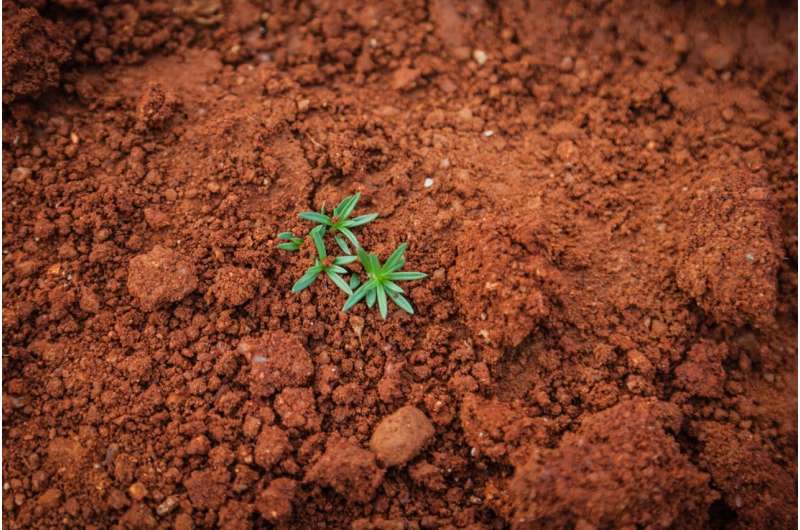How farms could help defend the Earth's own microbiome

Action must be taken to conserve, restore and manage the diversity of microbes that live in soil environments to prevent their extinction, according to a Perspective article published in Nature Microbiology. The paper emphasizes the urgent need to protect the microbes that play a fundamental role in supporting life on the planet.
Microbes are essential for the success and diversity of all life on Earth. Although the use of microbiomes to counter global biodiversity loss and mass extinction has been previously discussed, less attention has been paid to potential threats to microbial diversity.
Colin Averill and colleagues present a strategy to prevent global microbial biodiversity losses using soil fungal microbiomes as an example. The strategy combines three action points: conserve, restore and manage.
- Conserve reflects the need to document current soil microbial diversity to identify areas and species most at threat. For example, soil fungal biodiversity data were found to be under-represented across the entire continent of Africa.
- Restore discusses avenues for rebuilding microbial ecosystems that are already suffering diversity losses. To demonstrate this, the authors performed a meta-analysis of 80 published studies, revealing that soils treated with fungi that are native to that environment accelerated plant growth by an average of 64%.
- The manage action point argues that land used in food and forest agriculture—which make up most of the vegetative land on Earth—is a promising target for promoting and protecting microbial biodiversity.
The authors call upon scientists and stakeholders, such as conservation and restoration projects and organizations, as well as big and small players in food and forest agriculture, from across the world to act now to protect Earth's microbiomes from extinction.
More information: Colin Averill et al, Defending Earth's terrestrial microbiome, Nature Microbiology (2022).
Journal information: Nature Microbiology
Provided by Nature Publishing Group




















